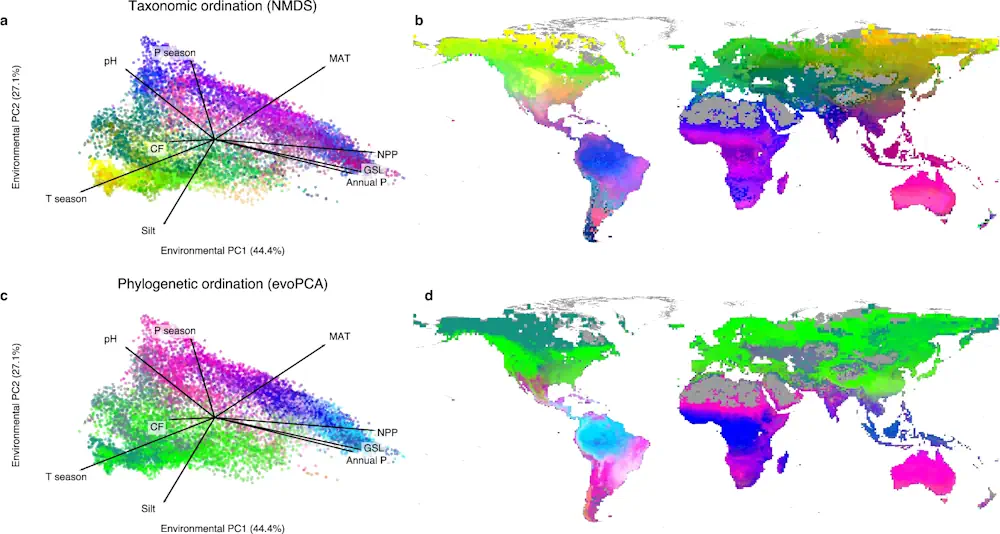A group of EPFL and ETH Zurich scientists have mapped the biodiversity in forests worldwide. Their data, when combined with climate projections, reveal trends that could support ecosystem conservation and restoration efforts.
According to the latest figures from the Food and Agriculture Organization of the United Nations, forests cover just over 4 billion hectares of the Earth’s surface, or one-third of its total land. The benefits of forests are numerous: they provide raw materials, act as carbon sinks, help regulate the climate and protect the planet, provide a home for biodiversity, and serve as a source of well-being.
Yet the latest survey suggests that around 31% of tree species are threatened with extinction. Efforts are under way to build the resilience of forest ecosystems. But which parts of the world are experiencing the biggest changes? Which regions should be prioritized for protection? Which tree species are most resilient to the local impacts of climate change?
Scientists at EPFL have teamed up with colleagues at ETH Zurich to answer these questions and more. Their findings, published in Nature Communications, provide key insights for policymakers and planners, helping to guide sustainable forest management practices around the world.
For this study, co-led by EPFL’s Environmental Computational Science and Earth Observation Laboratory (ECEO) and two research groups at ETH Zurich, scientists combined almost 26 million tree observations with geospatial data on climate and soil conditions as well as geographical dispersion constraints, which contain tree species within their reported native ranges.
The scientists also used their models to predict species distribution under different climate and temperature scenarios through to 2100.
The data, compiled in map form, show the incredible diversity of forest ecosystems worldwide. The lines on the maps demarcate species with similar characteristics and genetic relationships. Each site is associated with a unique set of tree species and lineages—a result of historical and environmental factors.
